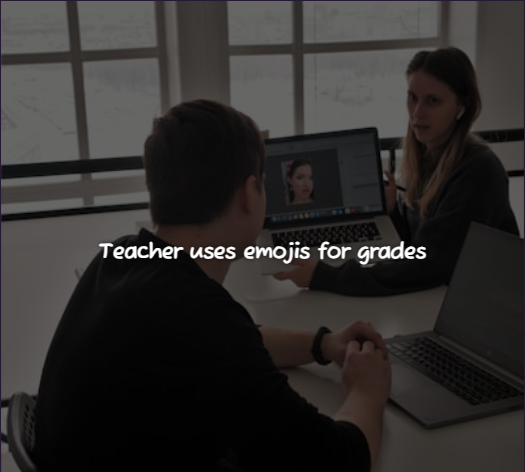The Power of Emojis in the Classroom: How Teachers Can Use Symbols to Improve Learning Outcomes
Hey there, fellow teachers! To tell the truth, have you ever been considering incorporating emoji into the classroom or, to be more exact, class teaching to enhance engagement level of learner with the help of funny feelings? Nevertheless, if it is how I remember them, I would reckon that you might be missing a whole lot more than just a possibility to bring your students closer and be indeed a change in their educational experience. In our article we will discuss usefulness of emoji in classroom, acquisition of ways they could be included in your pedagogical activities and give answers to typical questions. Here you go, hold up a cup of coffee, get all cozy and feel at home, and let’s delve into the topic!
You will learn a lot about how emojis can be an incredibly powerful tool in learning education.
Emoji as a tool to assist in communication has found its place into our digital life. Each of us is now able to convey our thoughts and emotions much better than before though these symbols. Everybody probably understands what these tiny things mean and that they make learning process easier. The inclusion of emojis in the classroom development can assure a cheerful and concise classroom, high degree of connection between students and their professor, and grasping of difficult ideas.
Exploring the role of emojis in Education Through history

What is surprising even now is that this emojifier way has been going in teaching for more than two decades. However, the discovery of the first emoji dictionary used for teaching children of primary school dates back to 1995. A Japanese teacher invented this work. Thus, with the use of changing of emojis teachers around the world have implemented the power to make studying become more interesting and fun.
How Emoticons have become Important Part of Modern Education
Nowadays emojis are not considered to be some sort of curiosity items but rather, they serve as the powerful tool for communication and collaboration in the modern technology environment. Educators can use symbols, as an additional tool in their teaching strategies, to reach students’ unique visual learning styles. Symbols help students to be creative, critical thinking and problem solving. This occurs because of the fact that the emojis can make it easy to understand each other even among students from different backgrounds. Also, the emojis can offer common ground that helps to build a united community.
Trends and Developments in Emoji-Based Learning
Dedication to remain current with the newest trends and studies of edtech makes the difference between a teacher and an educator of the 21st century. Let’s look at some exciting developments and ideas shaping the future of emoji-based learning:Let’s look at some exciting developments and ideas shaping the future of emoji-based learning:
📱 Gamification: A very good way of enlivening the lessons is incorporation of game elements like gains, badges and leaderboards as this have the capacity to raise the engagement and motivation of the students. The trainer can make use of emojis as symbols for rewards, difficulties, or achievements with which the learning might be thought of as a game to be played than any normal routine.
🤖 Artificial Intelligence: AI technology development is going forward. Therefore, adaptive learning systems based on emojis are being developed more frequently, and they are made available to give personalized evaluatios and feedback accordingly. The teachers, in turn, help learners using these systems to analyze the student responses, identify problems, and suggest personalized resources for learners to improve their academic performance.
🌎 Cultural Diversity: The modern trend of cultural sensitivity and diversity favor emojis in that they can serve teachers in the classroom as a tool to teach the students different perspectives and representations. Emojis like the 🎗, 💌 and 👪 depicting different cultures, religions, and groups can facilitate dialogue on diversity, equity, and social justice matters.
FAQ
Q: A legit query/ Problem is the appropriate use of emojis in the classroom is unprofessional?
A: Not necessarily! By correctly used emojis you will support yours credibility you and students` relationship. So you only need to bring a balance in being both professional and pleasant.
Q: Wouldn’t it be a hassle involving emojis?
A: Contrastly the used emoji can easily make the student actively involved thus attentive and concentrate. Nevertheless, there should be created some rules and limitations concerning emoji-involvement while teaching through the lectures or activities.
Q: Could emojis help us move away from a teacher-centered environment to one more student-oriented?
A: Who knows, anytime you try now! Let us say, devise emoji-tagged quizzes, modify math assignment as emoji-puzzles, or introduce literature devices like tone and mood by using emoticons. If you are not sure what works best, give yourself the freedom to explore and run some tests!
Emoji Activities Across Subject Areas
| Subject | Activity |
|---|---|
| Math | Emoji number lines, emoji pattern blocks, emoji geometry shapes |
| Science | Emoji lab safety signs, emoji element symbols, emoji habitat dioramas |
| English | Emoji book reviews, emoji poetry, emoji character analysis |
| Social Studies | Emoji timelines, emoji map markers, emoji cultural representations |
| Foreign Language | Emoji vocabulary flashcards, emoji dialogues, emoji menu ordering |
Practical Tips and Ideas for Integrating Emojis into Your Teaching Strategies
let’s get into your class and begin to use emojis. Here are some practical tips and activity ideas to get you started:Here are some practical tips and activity ideas to get you started:
📝 Emoji Rubrics: Make the rubrics which uses emojis for the purpose of performance levels or requirement of evaluation. This will enable the students to grasp what is expected of them quickly and allow for the self – assessment procedure to be easier.
💬 Emoji Exit Tickets: Wrap up the lessons with emoji exit tickets that summarize the concept, ask students to reflect on the daily topics, and display their level of understanding. I recommend that you study the contents of these applications to know what students need and what they are curious about.
🏆 Emoji Rewards: Develop a sensational emoji-based scoring system, where students get emoji points for fulfilling homework tasks, taking part in classes, or demonstrating desirable behaviors. Show the emojis achieved by students on a classroom chart or a digital board to create a positive atmosphere and a feeling of building up.
👩🏫 Virtual Field Trips: Prepare virtual fields of trip for students and help them to have discussions with experts or navigate to online destinations using emojis as guides to their exploring and description of their experiences.
Turn your attention to the subject hand, the results of using emoji in teaching may are extraordinary including students’ engagement, motivation and comprehension. Through with this, you will not only make them learn things in a more enjoyable but also preparing the students to real-life situations where it is the digital skill that will help them succeed.
Conclusion
In conclusion, jump on the opportunity now and you’ll be glad you did. Let emojis in your classrooms become the beginning of discovering creativity and language. A good place to start! Never contemplate there is only common method – always be willing to experiment, and if some of the methods don’t work out do not hesitate to find them someplace else, e.g. turn to colleagues, ask for their opinion. Teaching can be a happy journey. I am going to see you in the next article’s class!😊




